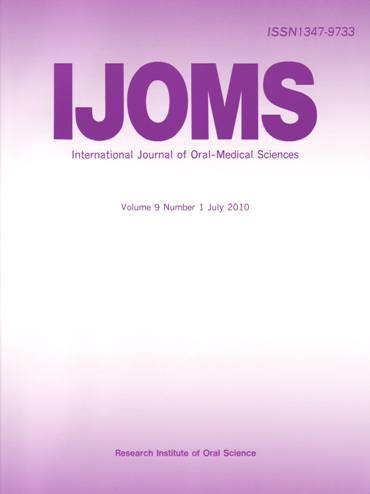Volume 7, Issue 2
Displaying 1-12 of 12 articles from this issue
- |<
- <
- 1
- >
- >|
Original Articles
-
2008 Volume 7 Issue 2 Pages 55-66
Published: 2008
Released on J-STAGE: February 15, 2011
Download PDF (179K) -
2008 Volume 7 Issue 2 Pages 67-71
Published: 2008
Released on J-STAGE: February 15, 2011
Download PDF (141K) -
2008 Volume 7 Issue 2 Pages 72-76
Published: 2008
Released on J-STAGE: February 15, 2011
Download PDF (120K) -
2008 Volume 7 Issue 2 Pages 77-86
Published: 2008
Released on J-STAGE: February 15, 2011
Download PDF (517K) -
2008 Volume 7 Issue 2 Pages 87-90
Published: 2008
Released on J-STAGE: February 15, 2011
Download PDF (258K) -
2008 Volume 7 Issue 2 Pages 91-97
Published: 2008
Released on J-STAGE: February 15, 2011
Download PDF (307K) -
2008 Volume 7 Issue 2 Pages 98-106
Published: 2008
Released on J-STAGE: February 15, 2011
Download PDF (1636K) -
2008 Volume 7 Issue 2 Pages 107-112
Published: 2008
Released on J-STAGE: February 15, 2011
Download PDF (262K) -
2008 Volume 7 Issue 2 Pages 113-118
Published: 2008
Released on J-STAGE: February 15, 2011
Download PDF (559K)
Case Repots
-
2008 Volume 7 Issue 2 Pages 119-122
Published: 2008
Released on J-STAGE: February 15, 2011
Download PDF (235K) -
2008 Volume 7 Issue 2 Pages 123-127
Published: 2008
Released on J-STAGE: February 15, 2011
Download PDF (190K) -
2008 Volume 7 Issue 2 Pages 128-134
Published: 2008
Released on J-STAGE: February 15, 2011
Download PDF (548K)
- |<
- <
- 1
- >
- >|
